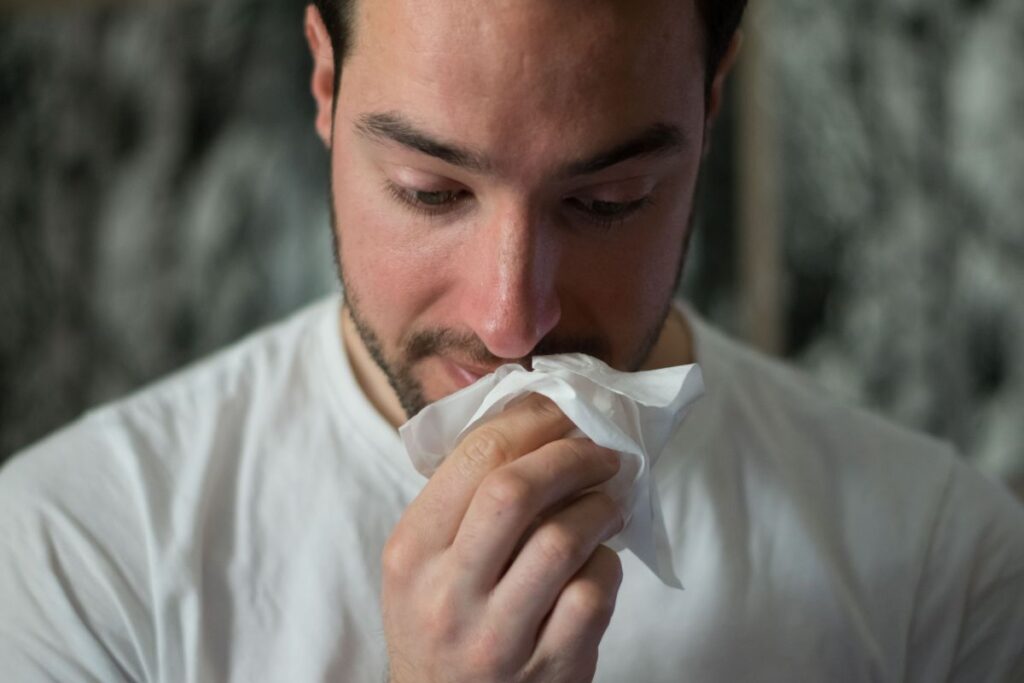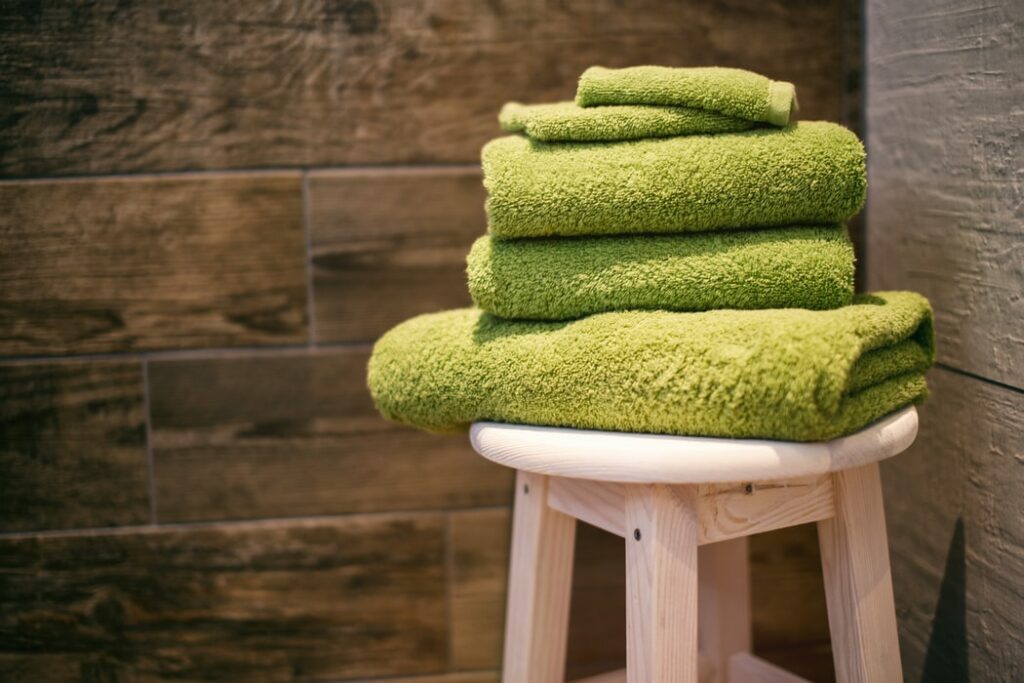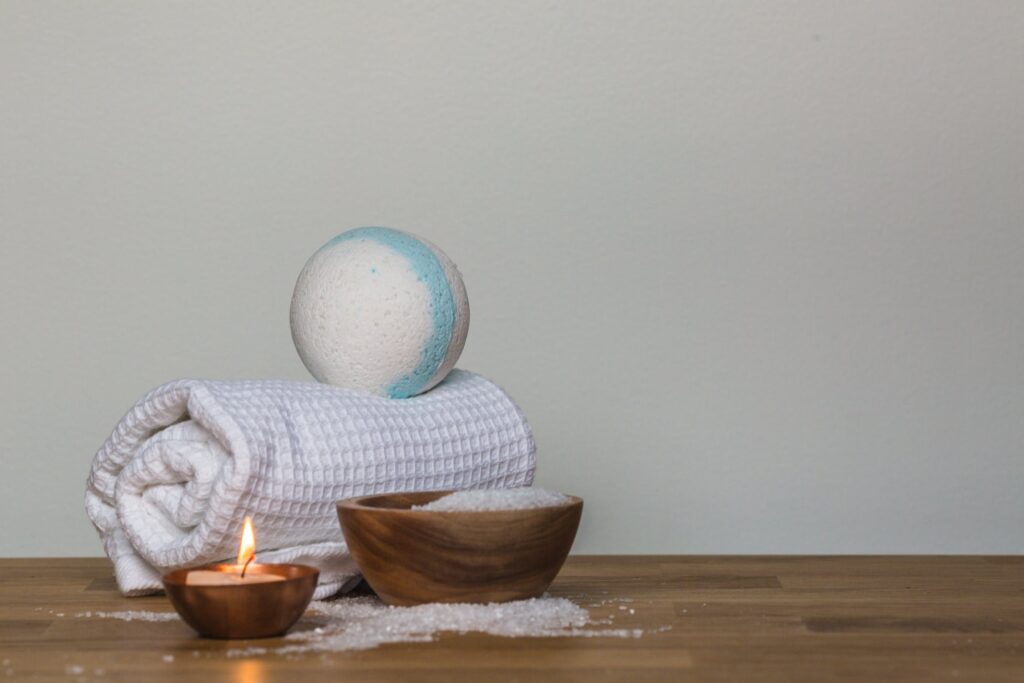Colds and flu are particularly disruptive in our modern, fast-paced society. Simple activities can feel insurmountable when you have a viral illness because of the accompanying sneezing, coughing, and general discomfort. Portable saunas are an interesting research route that may help in the fight against seasonal enemies like the common cold and the flu.
Envision a simple at-home remedy that might strengthen your immune system and lessen the duration and intensity of cold and flu symptoms. The book "Healing Heat: Can Portable Saunas Help in Fighting off Colds and Flu?" investigates this seemingly fantastic claim.
Our adventure into heat treatment and its possible benefits in cold and flu prevention and alleviation will continue across the following chapters. The surprising ways heat can strengthen our immune systems will be discussed, as well as the history of heat therapy and its application in modern medicine.
What Is A Cold?
A viral illness that manifests mostly in the nose and throat is a cold, sometimes known as the common cold. It's one of the most frequent ailments, and it's caused by a wide range of viruses, the most prevalent of which are rhinoviruses.
Droplets discharged into the air from a person coughing, sneezing, or talking might carry and infect others with cold viruses. Touching a contaminated surface and then your face, especially your eyes, nose, or mouth, can also cause a cold. The usual cold symptoms are:
- Fatigue
- Mild headache
- Sneezing
- Coughing
- Sore throat
- Runny or stuffy nose
- Watery eyes
- Low-grade fever (less common)
Depending on the individual, cold symptoms can continue anywhere from a few days to a week or more following exposure. Because the symptoms of cold and other respiratory infections, such as the flu (influenza), frequently overlap, it can be difficult to separate them based on symptoms alone.

Antibiotics are not effective against viral infections like the common cold. Rather, treatment centres on alleviating symptoms and bolstering the immune system. Many people sleep, drink plenty of fluids, take over-the-counter drugs (such as decongestants and painkillers), and use saline nasal sprays to ease cold symptoms.
Good hand hygiene (regular handwashing with water and soap), avoiding direct contact with ill people, and covering one's nose and mouth when sneezing or coughing are all effective ways to lower the risk of developing or transmitting a cold. Vaccines and antiviral drugs have been developed to combat and treat various cold viruses. Still, they are less widely available for the common cold than influenza.
If your cold symptoms are severe or persist for an extended period, or if you have a pre-existing medical condition that could be made worse by a cold, it is crucial to keep an eye on how you feel and get medical attention if necessary.
What Is A Flu?
The influenza virus causes a highly contagious respiratory illness with widespread spread. The flu virus is to blame, and it can produce mild to severe symptoms. Flu seasons typically occur in the fall and winter months in many regions of the world. They are characterised by the rapid onset of flu symptoms and the potential for extensive epidemics. The flu may cause the following symptoms:
- Sore throat
- Cough
- Fever
- Fatigue
- Headache
- Runny or stuffy nose
- Chills
- Muscle aches and body pains
- Nausea or vomiting (more common in children)
The flu virus is spread most commonly through infected people's coughs, sneezes, and conversations. The virus can also be transmitted from person to person by contacting contaminated surfaces or objects and then touching one's own eyes, nose, or mouth.
Many people recover from the flu with just rest and supportive care. Still, young children, the elderly, pregnant women, and those with certain underlying health issues are more likely to experience serious consequences from the flu. Some examples of these problems are pneumonia, sinusitis, bronchitis, and worsening preexisting conditions.
Getting vaccinated is one of the best ways to avoid catching the flu. Vaccination against the flu every year is suggested since various flu strains circulate yearly. Each year, the influenza vaccination is modified to better protect against the types of the virus that are most likely to be widespread. The flu vaccine may not prevent the flu entirely, but it can lessen the intensity of symptoms and the likelihood of complications.
Does Going To The Sauna Help With Colds And Flu?
A sauna session can help alleviate congestion, muscle pains, and exhaustion associated with the common cold and the flu. It's great for your health and will make you feel better overall. Can a trip to the sauna cure a cold or flu? There is no denying that many of us suffering from cold and flu symptoms find sauna heat therapy extremely helpful. However, it is unknown whether sauna use helps hasten recovery from such conditions.
Sauna For Cold & Flu
Sweating out the infection, as many say, is the sauna's supposed treatment for colds and flu. Although it's not impossible, there's not much in the way of supporting evidence from the scientific community. This is debatable. There is little doubt, however, that sauna therapy alleviates the unpleasant symptoms of colds and flu, strengthens the immune system, enhances our mood, and makes us generally healthier.
Can Sauna Sweat Out Colds And Flu?
The discomfort of a cold or flu can be mitigated by sweating it out in a sauna. When internal body temperature rises above a certain threshold, the brain signals the sweat glands to produce sweat. This reduces internal body temperature. The cleansing effects of water and waste product flushing are realised. During this time, patients report a reduction in their symptoms and an uptick in their disposition.
It's unlikely that going to a sauna will lessen the duration of a cold or the flu, but it will help alleviate the symptoms. Using a sauna will likely shorten the time it takes to recover from a cold or flu. 'Sweating it out' and getting over a cold or flu with the help of a sauna is a common claim floating around the web. There is, however, a lack of credible scientific evidence to back up these assertions.
The Causes Of Cold And Flu Relief From Saunas
A sauna session can help us feel better, including reducing the severity of cold and flu symptoms. Sweating has beneficial effects on one's health, including improved cardiovascular function, immune system stimulation, viral weakening, system detoxification, and enhanced drainage.
Boosts Heart Rate And Metabolism
Heart rate and blood pressure increase when the core temperature rises. The increased demand for oxygenated blood causes the heart rate to rise. Because of this, more oxygen and nutrients can reach every part of the body. Healing, immune system strengthening, and infection-fighting are all aided by the oxygen and nutrients delivered by this blood.
Detoxification Of The System
A decent sauna session will help you cleanse your system and eliminate pollutants. This aids the body in flushing out the potentially dangerous compounds it has been exposed to while fighting off the infection. Even though a sauna probably won't help you get over a cold or flu, it will certainly make you feel better.
Improves Drainage
When you're congested due to a cold or the flu, a sauna session can help. This helps alleviate the suffocating effects of the conditions, including congestion. Perfect for when you're under the weather and need to perk up a bit. Moreover, it's a quick fix for improving your mood.
Boost Mood
A sauna has several advantages, not simply for one's body. A visit to the sauna can relieve stress, improve one's disposition, and raise one's spirits. When you have the flu or a cold, this little pick-me-up is exactly what you need. Raised serotonin levels in the brain are responsible for the uplifted disposition many report feeling after a sauna session.
How Long Should You Sauna Boost Immunity?
You may have heard that "sweating it out" is a good approach to treating a cold, but recent research suggests this may not be the most effective method. Clinical research has shown that infrared saunas have positive health effects, but whether or not they are effective against the common cold or influenza is still being determined. Today, we'll discuss whether or not saunas help with cold and flu symptoms and how long you should steam to improve your immune system.

Can A Sauna Boost Your Immunity?
Using a sauna can boost immunity and help the body eliminate harmful substances. White blood cells are the immune system's primary weapon, a network of organs, tissues, and cells that work together to protect your body.
Viruses and bacteria are the targets of white blood cells, which seek to eliminate them. Consistent sauna use benefits immunity because it triggers a fever, the body's initial defence mechanism. A fever makes the area inhospitable for the invaders, reducing their chances of survival.
How Long Should You Sauna Boost Immunity?
Spending at least 15 minutes in a sauna, more than three times per week, for three months has improved immunity. The studies below attribute their results to an increase in white blood cells and heat shock proteins to 15 minutes in a sauna. However, the time you spend in a sauna isn't everything; whether you stay for a few minutes or hours, you'll get the benefits of sauna use.
How Does Sauna Improve Immunity?
The heat-shock proteins and white blood cells in your body will thank you after a session in the sauna. Two types of immune cells are found in white blood cells: innate and adaptive.
Both innate and adaptive immune cells are always present in the body; however, adaptive immune cells are created in response to an infection and give longer-lasting immunity against the invading pathogen.
What Are The Side Effects Of Sauna Use For Colds And Flu?
Dehydration, disorientation, and skin irritation are just a few of the negative impacts that sauna use can have. Spending too much time in a sauna can increase your risk of dehydration due to the activation of the body's sweat response. One of the most important things you can do to fight off a cold or the flu is to drink as much fluid as your body is losing via perspiration. If your body is losing more fluid than it is taking in, your immune system may struggle to fight off the germs that are making you sick.
Does Sauna Help Chest And Nasal Congestion?
Congestion alleviation is transitory, but a sauna can help. This is because the heated steam inhaled in a steam room or conventional sauna can aid in dissolving the mucus and clearing the airways in the lungs. Stay hydrated and keep your sauna time to no more than 15 to 20 minutes if you use it to treat a cold or its symptoms.
How To Use A Sauna When You Have A Fever?
There are several things to watch out for if you take a sauna bath while running a fever. If you follow these guidelines, you can enjoy your sauna session without worrying about your safety or putting your health at risk.
- Hydration tips for infrared saunas: First, ensure you are well hydrated before, during, and after your workout. Mineral salts are crucial to human health and wellness. It's necessary to replenish them after using an infrared sauna because they're lost through sweat. Water and sports drinks are ideal for replacing lost salt. While water is the greatest option for replenishing fluids, the electrolytes in sports drinks can also help compensate for mineral loss. Fruit drinks and coconut water are also available.
- What's the rush? Take it slowly and relax: Second, you shouldn't push yourself too much when you have a fever or a cold. Remember that your body is already fighting an illness, so you shouldn't push it further by allowing your temperature to become dangerously high. Even a hot shower could be too much if you have a fever. Take it easy. Rest frequently and avoid overexertion. Steam rooms help relieve the common cold symptoms by causing the nasal mucus to relax and drain.
- Quit while you're ahead: Finally, stop immediately if you start to feel faint or queasy. Don't disregard your body's cries for help; sauna therapy will be there when you recover. While sauna therapy has many health benefits and is a terrific addition to a healthy lifestyle, it is ineffective in treating the common cold.
FAQs About Sauna
If you are already sick with a cold or flu, using a portable sauna might not be advisable. Elevated body temperatures could worsen your symptoms or lead to dehydration. It's best to consult a medical professional before using a sauna while you're sick.
There's limited scientific evidence to support the idea that saunas can significantly boost the immune system's ability to fight off colds and flu. While saunas might help improve circulation and relaxation, a strong immune system is better supported through a healthy lifestyle, balanced diet, regular exercise, and adequate sleep.
If you choose to use a portable sauna during cold and flu season, it's important to stay hydrated, avoid excessive heat exposure, and listen to your body. If you're feeling unwell, it's best to consult a medical professional before using a sauna.
No, using a portable sauna cannot replace important preventive measures like getting vaccinated against the flu. Vaccination remains one of the most effective ways to protect yourself and others from the flu virus.
Individuals with certain medical conditions, such as cardiovascular issues, respiratory problems, or skin conditions, should consult a doctor before using a sauna. Pregnant women, young children, and the elderly should also exercise caution when using saunas.
Conclusion
Colds and flu are common nasal illnesses that are caused by viruses like rhinoviruses. Portable saunas could help fight these illnesses. These viruses can make you feel tired, have a headache, sneeze, cough, have a sore throat, have a runny nose, watery eyes, and a low-grade fever. The goal of treatment is to relieve symptoms and boost the immune system. Good hand hygiene, staying away from sick people, and covering your nose and mouth when you cough or sneeze are all good ways to lower your risk of getting a cold or passing it on.
The flu virus is a highly contagious respiratory illness that can cause mild to serious symptoms, such as a sore throat, cough, fever, headache, runny nose, muscle aches, nausea, or vomiting. It is important to keep an eye on signs and see a doctor if they last or get worse. Each year, different flu types spread, so it's best to get a flu shot every year.
The success of sauna therapy isn't clear, but it can help with cold and flu symptoms like congestion, muscle pain, and tiredness. Even though saunas may help relieve symptoms, they may not help you get better as quickly as saunas do. A possible treatment is to sweat out the infection, but there isn't much scientific proof to back this up. Saunas can also help relieve symptoms because they raise the body's temperature, make water and waste products flush out of the body, and reduce symptoms. Even though sauna use probably won't make a cold or flu go away faster, it may help relieve symptoms and speed up the healing process.
Using a sauna can help relieve cold and flu symptoms by improving heart function, boosting the immune system, slowing viruses, cleaning out the system, and improving drainage. They also speed up the heart rate and metabolism, clean the body, and make circulation better. A sauna session can also help you feel better, reduce stress, and lift your mood.
How long should a visit to the sauna last? Regular use of a sauna can boost immunity by causing a fever, which is the body's first line of defence against germs and viruses. At least 15 minutes should be spent in the sauna at least three times a week for three months. Studies have shown that after 15 minutes in a sauna, the number of white blood cells and heat shock proteins goes up.
But there are some bad things that can happen when you use a sauna, like getting dehydrated, feeling lost, and irritated skin. To fight off colds and flu, you need to drink as much water as your body loses through sweating. Saunas can also help with chest and nose congestion, but you need to stay hydrated and don't stay in the sauna for more than 15 to 20 minutes at a time.
Follow these rules if you want to use a hot bath while you have a fever without putting your health at risk. Infrared saunas can help you stay hydrated by making sure you drink enough water before, during, and after your workout, replacing mineral salts with water and sports drinks, and taking it slow and relaxed. It's important to rest often and not push yourself too hard. Steam rooms can help relieve cold symptoms by letting nose mucus loosen up and drain.
Last but not least, stop right away if you start to feel dizzy or sick. Sauna treatment is a great part of a healthy lifestyle, but it won't help you get rid of a cold.
Content Summary
- Colds and flu disrupt our fast-paced society.
- Symptoms like sneezing, coughing, and discomfort make simple tasks hard.
- Portable saunas might help combat colds and flu.
- "Healing Heat" investigates portable saunas' effectiveness against these illnesses.
- The history of heat therapy in medicine is explored.
- A cold is a viral illness targeting the nose and throat.
- Rhinoviruses are the most common cause of colds.
- Cold viruses spread via airborne droplets and contaminated surfaces.
- Typical cold symptoms include fatigue, sneezing, and a runny nose.
- Colds can last from a few days to over a week.
- Cold symptoms can overlap with other respiratory infections.
- Antibiotics are ineffective against colds.
- Treatment focuses on symptom relief and immune system support.
- Hand hygiene reduces the risk of catching or spreading colds.
- Flu is a contagious respiratory illness caused by the influenza virus.
- Flu seasons typically occur in autumn and winter.
- Flu symptoms include sore throat, fever, and muscle aches.
- The flu spreads through infected people's respiratory droplets.
- The elderly and children are more vulnerable to severe flu consequences.
- Annual flu vaccinations are recommended.
- The flu vaccine is tailored yearly for prevalent virus strains.
- Sauna sessions can alleviate cold and flu symptoms.
- Sauna heat therapy aids in comfort but isn't proven to speed up recovery.
- The belief that saunas can "sweat out" infections lacks scientific evidence.
- Sauna use may alleviate cold symptoms and boost the immune system.
- Sauna sessions help reduce internal body temperature and alleviate discomfort.
- Sweating in a sauna may not reduce cold or flu duration.
- Sauna sessions can help with detoxification and system cleansing.
- Saunas can relieve congestion and improve mood.
- Sauna sessions increase serotonin, elevating mood.
- "Sweating it out" in a sauna may not be the best cold treatment.
- Infrared saunas have shown positive health effects.
- Sauna use can boost immunity by mimicking a fever response.
- Consistent sauna use benefits immunity by increasing white blood cells.
- Sauna sessions of 15 minutes, three times weekly, have been shown to improve immunity.
- Heat-shock proteins and white blood cells benefit from sauna use.
- There are innate and adaptive immune cells in white blood cells.
- Sauna use can lead to dehydration, disorientation, and skin irritation.
- It's crucial to stay hydrated when using a sauna.
- Saunas can provide temporary relief for chest and nasal congestion.
- Steam in a sauna can help dissolve mucus and clear airways.
- When using a sauna with a fever, safety precautions are crucial.
- Hydration is essential before, during, and after sauna use.
- Replenishing mineral salts lost during sauna sessions is necessary.
- Pushing oneself too hard during illness can be dangerous.
- Overexertion in a sauna when unwell can lead to heightened symptoms.
- Feeling faint or queasy in a sauna is a sign to stop.
- Sauna therapy provides many health benefits for general wellness.
- Sauna therapy is not a proven cure for the common cold.
- It's always crucial to listen to one's body and prioritise health.






